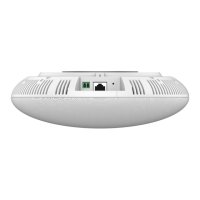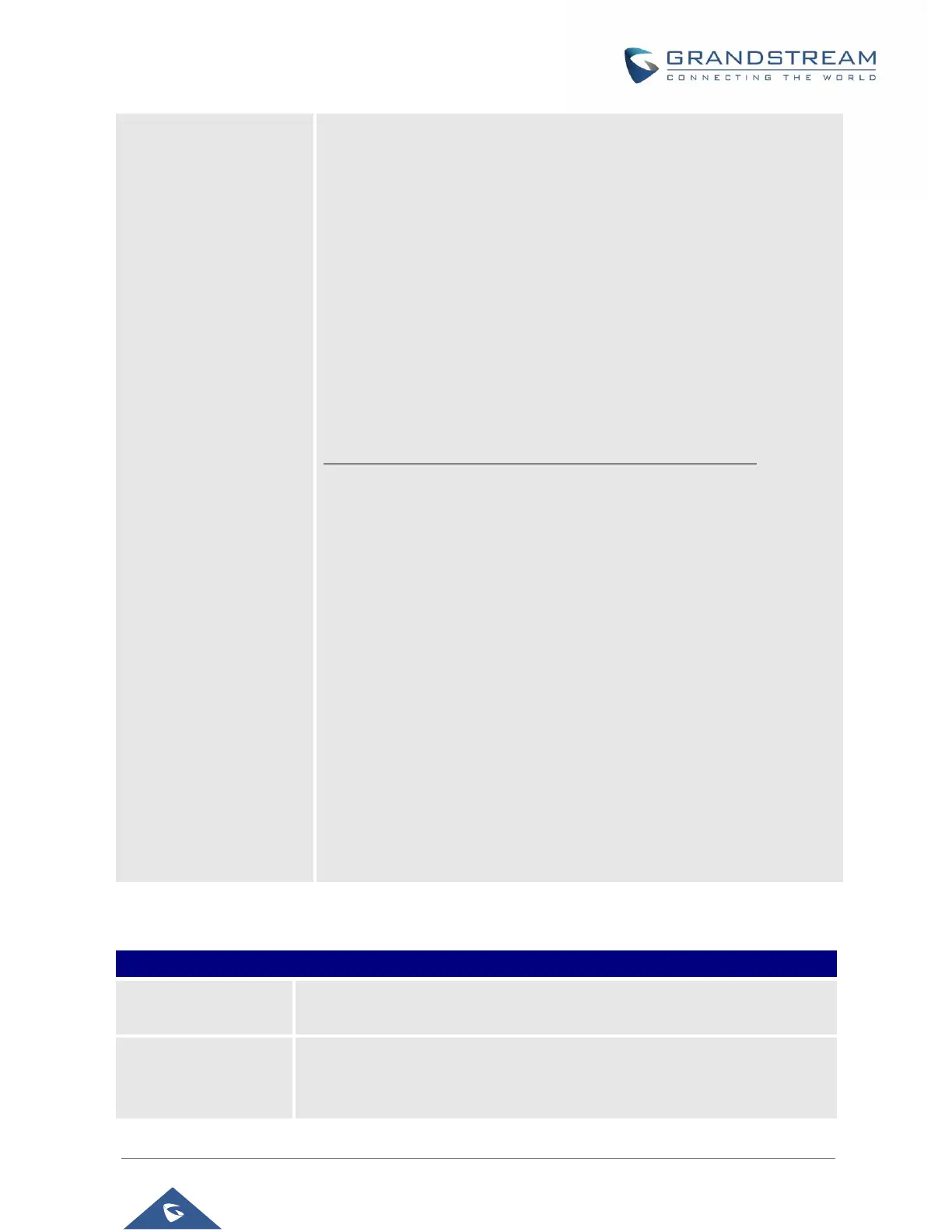Block any number of leading digits 1900 or add prefix 1617 for any dialed
7-digit numbers
• Example 3: {1xxx[2-9]xxxxxx | <2=011>x+}
Allow any number with leading digit 1 followed by a 3-digit number, followed
by any number between 2 and 9, followed by any 7-digit number OR allow
any length of numbers with leading digit 2, replacing the 2 with 011 when
dialed.
3. Default: Outgoing – { x+ | \+x+ | *x+ | *xx*x+ }
Allow any number of digits, OR any number with a leading +, OR any
number with a leading *, OR any number with a leading * followed by a 2-
digit number and a *.
Example of a simple dial plan used in a Home/Office in the US:
{^1900x. | <=1617>[2-9]xxxxxx | 1[2-9]xx[2-9]xxxxxx | 011[2-9]x. | [3469]11 }
Explanation of example rule (reading from left to right):
• ^1900x. – prevents dialing any number started with 1900
• <=1617>[2-9]xxxxxx – allow dialing to local area code (617) numbers
by dialing 7 numbers and 1617 area code will be added automatically
• 1[2-9]xx[2-9]xxxxxx |- allow dialing to any US/Canada Number with 11
digits length
• 011[2-9]x. – allow international calls starting with 011
• [3469]11 – allow dialing special and emergency numbers 311, 411, 611
and 911
Note: In some cases, where the user wishes to dial strings such as *123 to
activate voice mail or other applications provided by their service provider,
the * should be predefined inside the dial plan feature. An example dial plan
will be: {*x+} which allows the user to dial * followed by any length of
numbers.
Configures whether to validate certification chain, when TLS/TCP is
configured for SIP Transport. If this is set to “Yes”, phone will validate server
against the new certificate list. The default setting is “No”.

